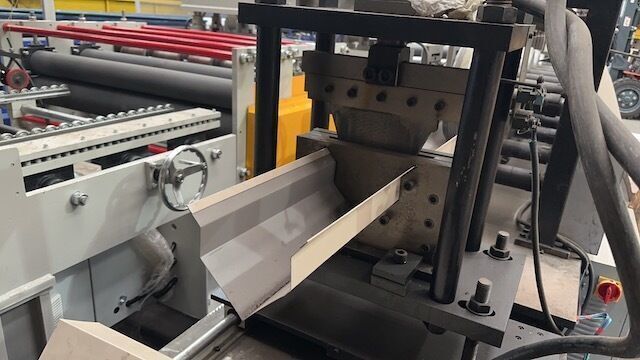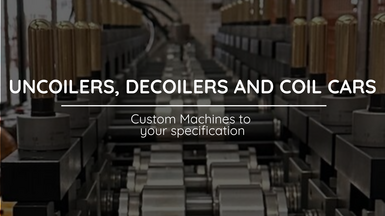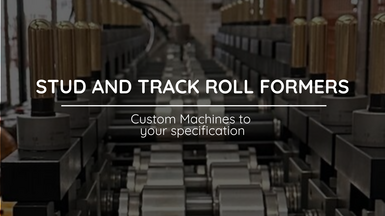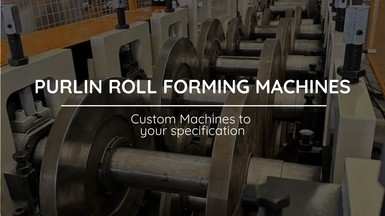
Metal Corner Trim Roll Forming Machine
Here's how a typical Metal Corner Trim Roll Forming Machine works:
Posted on Monday, November 20, 2023
A Metal Corner Trim Roll Forming Machine is a specialized piece of equipment used in the metalworking and construction industry to manufacture metal corner trim profiles. These machines are used to produce corner trims that are commonly used in building construction to cover and protect the corners of walls, particularly drywall or plasterboard walls.
Here's how a typical Metal Corner Trim Roll Forming Machine works:
- Material Feeding: The machine starts by feeding a coil of metal strip or sheet material, often made of steel or aluminum, into the roll forming machine.
- Roll Forming: The heart of the machine is the roll forming station, which consists of a series of rollers that gradually shape the flat metal strip into the desired corner trim profile. The rollers are designed in a sequence to bend and form the metal strip into the desired shape, typically an "L" or "U" shape, depending on the type of corner trim needed.
- Cutting: After the metal strip has been formed into the desired profile, a cutting mechanism is used to trim the corner trim to the desired length. This can be done using shearing blades or other cutting methods.
- Output: The finished metal corner trim pieces are then collected and stacked for further processing or packaging.
These machines can be customized to produce different types of metal corner trims with various profiles and dimensions, depending on the specific requirements of the construction project. The thickness and width of the metal strip, as well as the shape and size of the corner trim, can be adjusted as needed.
Metal Corner Trim Roll Forming Machines are known for their efficiency and consistency in producing high-quality corner trim profiles, making them an essential tool in the construction industry. They save time and labor compared to manually fabricating corner trims and ensure precise and uniform results.
Metal Corner Trim Profile
Metal corner trim profiles, also known as corner beads or corner guards, are essential components used in construction to protect and reinforce the corners of walls and ceilings. These profiles are typically made from metal, such as steel or aluminum, and serve several important purposes in both residential and commercial building projects:
- Corner Protection: Metal corner trim profiles are primarily designed to protect the vulnerable corners of walls from damage. They provide a durable and impact-resistant surface that helps prevent chipping, cracking, or denting of the drywall or plasterboard edges.
- Straightening and Alignment: Metal corner trims also aid in straightening and aligning the corners of walls, ensuring they are even and plumb. This is particularly important for achieving a professional and finished look in wall construction.
- Edge Reinforcement: They reinforce and strengthen the edges of the wall, making them more resistant to wear and tear over time.
- Aesthetic Enhancement: In addition to their functional benefits, metal corner trim profiles can enhance the aesthetics of a room by providing a clean and finished appearance to the corners. They can be painted to match the wall color or used to create decorative effects.
Common types of metal corner trim profiles include:
- L-Shaped Corner Bead: This type of profile has an "L" shape and is typically used for external corners. It provides protection and reinforcement to the outside edges of corners.
- U-Shaped Corner Bead: U-shaped corner beads are often used for internal corners (corners formed by two intersecting walls). They have a "U" shape and help create a smooth and straight transition between wall surfaces.
- Bullnose Corner Bead: Bullnose corner beads have a rounded or curved profile. They are commonly used to create a softer and more rounded corner, as opposed to the sharp 90-degree angles of traditional corner beads.
- Shadow or Reveal Bead: These corner beads are designed to create a shadow or reveal effect at corners. They can be used for decorative purposes to add depth and visual interest to walls.
- Expansion Joint Bead: Expansion joint corner beads are used to allow for movement in building materials due to temperature fluctuations or settling. They help prevent cracks from forming at corners.
Metal corner trim profiles come in various sizes and thicknesses to accommodate different wall thicknesses and project requirements. They are typically installed during the drywall or plasterboard installation process and are secured using nails, screws, or adhesive.
Overall, metal corner trim profiles are essential components in construction, helping to protect, strengthen, and enhance the appearance of building corners while ensuring their longevity and durability.
Metal Corner Trim Sizes
The sizes of metal corner trim profiles can vary depending on the specific needs of a construction project and the manufacturer's product offerings. However, I can provide you with some common sizes and dimensions for metal corner trim profiles, which are often used in the construction industry:
- L-Shaped Corner Bead:
- Width of the leg (short side): Typically around 1 inch to 1.5 inches (25 mm to 38 mm).
- Width of the flange (long side): Usually around 2 inches to 3 inches (50 mm to 76 mm).
- Length: Customizable to match the height of the wall or ceiling.
- U-Shaped Corner Bead:
- Width of the legs: Typically around 1 inch to 1.5 inches (25 mm to 38 mm).
- Width of the channel (inside dimension): Usually around 3/4 inch to 1 inch (19 mm to 25 mm).
- Length: Customizable to match the height of the wall or ceiling.
- Bullnose Corner Bead:
- Radius: Common radii for bullnose corner beads include 1/2 inch (13 mm) and 3/4 inch (19 mm). The overall size will depend on the radius used.
- Shadow or Reveal Bead:
- Width of the legs: Typically around 1 inch to 1.5 inches (25 mm to 38 mm).
- Width of the reveal: Can vary widely, depending on the desired shadow or reveal effect.
- Length: Customizable to match the height of the wall or ceiling.
- Expansion Joint Bead:
- Width of the legs: Typically around 1 inch to 1.5 inches (25 mm to 38 mm).
- Width of the channel (inside dimension): Usually around 3/4 inch to 1 inch (19 mm to 25 mm).
- Length: Customizable to match the height of the wall or ceiling.
It's important to note that these dimensions are approximate and can vary based on manufacturer specifications and regional building standards. When selecting metal corner trim sizes for a construction project, it's crucial to consider factors such as the thickness of the wall or ceiling, the desired corner profile, and any specific design or structural requirements.
Additionally, some manufacturers may offer custom sizes to meet the unique needs of a project. Therefore, it's advisable to consult with the manufacturer or supplier to ensure that you choose the appropriate metal corner trim sizes for your specific application.
All our machines are all due to variations in the customer's demand, and we are always ready to assist with any issues. All machines are assembled by our expert team in Orlando, Florida. We have been leading the Roll Forming Machine market since 2009, and have great expertise, so you will be in safe hands. For further information, contact our team here.
For more Machines, browse our extensive range here
Roll Forming Machines LLC's New Factory
Posted on Sunday, March 23, 2025
We have relocated factories, which will be available for tours very soon.

Uncoiler, Decoiler and Coil Car Roll Forming Machine Accesories from Roll Forming Machines LLC
Posted on Sunday, November 24, 2024
Contact us today with your specifications for a custom Uncoiler, Decoiler or Coil Car at [email protected] or call us at (+1) (407) 859 1119

Stud and Track Roll Forming Machines from Roll Forming Machines LLC
Posted on Saturday, November 23, 2024
Contact us today with your specifications for a custom Stud and Track Machine at [email protected] or call us at (+1) (407) 859 1119

Cee and Zee Purlin Roll Forming Machines from Roll Forming Machines LLC
Posted on Saturday, November 23, 2024
Contact us today with your specifications for a custom Cee and Zee Purlin Machine at [email protected] or call us at (+1) (407) 859 1119